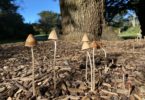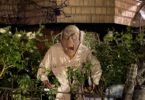
I’ve always been reluctant to get behind the “stash your trash” mantra. Not because I enjoy stepping on gum or approve of garbage dumped along the road, but because of the “out of sight, out of mind” mentality it instills in us. The very idea of “trash” implies that something is inherently worthless just because we say so, and the act of throwing it “away” gives us license to forget its very existence.

Just like the forgotten people of this world I am interested in the forgotten objects of this world. So I took a trip to the San Francisco Dump (Transfer Station) to see what happens on the other end of our squeaky clean consumer reality.

Transfer Station vs. The Dump
There’s a reason why the facility that processes the things we don’t want anymore is officially called a transfer station rather than a dump or landfill: A good percentage of the unwanted stuff will escape the fate of ending up 6+ feet under or being incinerated, depending on how aggressively your municipality is pushing recycling and composting programs. It also sounds like a much cooler place to go on a date. Really, I believe if everybody traded in just one movie night a year for a trip to the local transfer station, this country’s infamous wastefulness would come to a joyously grinding halt.
My partner Deb and I arrived on an overcast Monday morning for a tour of Sunset Scavenger‘s San Francisco Recycling & Disposal Solid Waste Transfer. The seagulls were already there, all eyes on breakfast.

The 4 R’s: Reduce, Reuse, Recycle, Rot
We put on our hard hats (also good to protect against “soft” artillery from above) and began our tour. The first thing we learned was that currently San Francisco recovers 72 percent of the materials it discards, bringing the city ever closer to its twin goals of 75 percent landfill diversion by 2010, and zero waste by 2020. No wonder the 4th R — Rot — cannot be ignored by any municipality serious about waste reduction. According to SF Environment, 36 percent of what San Francisco still sends to landfill is compostable (mostly food scraps) and 31 percent is recyclable (mostly paper).



The good news about these numbers is that this means 64% of all compostables and 69% of all recyclables are already staying out of the landfill, correlating closely to San Francisco’s current 72% diversion rate. In other words, if we applied the 4 R’s more diligently on a national and international level, zero waste is truly possible. Waste only exists because we’ve taught ourselves to believe that waste exists.
Composting
Deb and I are avid composters, and ever since the green composting bins arrived a couple of years ago, we’ve been in heaven. What’s really cool about a composting program as large as this one is that it can break down not only food scraps but yard trimmings and paper products such as coffee cups or greasy pizza boxes. Thus 400 tons of food scraps and other compostable material each day that would ordinarily go into landfill are cycled back into nitrogen-rich organic fertilizer at Jepson Prairie Organics from where they are distributed back to local farms who sell food to SF residents and restaurants. Voila, cycle closed!
Recycling
As far as recycling, it’s simply amazing though not surprising to see what comes through here:
Electronics and ceramics…


Furniture and sports equipment…


And even a piano!

In short, anything and everything that people buy, use, and get rid off. However, it’s important to remember that these items above were special drop-off items. “Ordinary” trash is NOT sorted, so if recyclable items are in the trash, they end up in the landfill. Things like these plastic bottles and humidifiers, for example:


This shows how important it is for residents to know what goes in the blue recycling bin. The city has made it really easy on San Franciscans by building Recycle Central at Pier 96, one of the largest state-of-the-art recycling facilities in the U.S. Here, a daily average of 1,400 tons of paper, cardboard, glass and plastic bottles, steel and aluminum cans, wood, and scrap metal are sorted by hand (!!!) on conveyor belts, meaning we don’t have to. The only thing that’s asked of SF residents is to learn the difference between compostables (green bin), recyclables (blue bin), and waste (black bin, which will hopefully be extinct not too far in the future. Deb and I have already traded in our old 64 gallon bin for a 32 gallon bin, and the 3 households in our building barely fill it half way).
Interesting fact: As the neighborhood’s largest employer, jobs at Recycle Central are coveted and are among the most well-paid for the predominantly low-income Bayview/Hunters Point residents. We did go there on our tour — one of the most amazing operations I’ve ever seen. We weren’t allowed to take photos, but if you’re in the area I highly recommend a visit.
Reuse
This was without doubt the coolest and most inspiring part of our tour: A one of a kind Artist In Residence Program (AIR) that provides a four-month residency to local professional artists who create art from the city’s trash. Deb describes it best in her blog post, A Trashy Tour:
A verdant hillside spotted with creatures made from trash was a surprising feature of the landscape. Sighs of awe fell from our mouths when we learned that we were on our way to see the facility’s three-acre sculpture garden. Indeed! Here’s a place where plants rescued from the trash and creations made by participants in the center’s unique Artist-in-Residence (AIR) program live side-by-side.


Talk about walking your (trash) talk!
I think this is what it comes down to, not only in regards to physical waste, but the rampant waste of energy, resources and biodiversity that has got us into all the ecological pickles we’re in:
Can we use our god-given creativity and inspiration to envision a world where every “thing” has inherent and lasting value? A world where garbage is defined as the lack of imagination rather than meaningless discarded matter?




Some may say it’s small fries in the larger battles of climate change and energy. I personally think that the way we relate to the natural resources we depend on is at the core of these larger battles. If we do not work on reclaiming the sacred in all things I have a hard time seeing how we will live in better harmony with the planet. Yes, we need laws, regulations, and big treaties, but we also need to personally reconnect with and embrace the parts of ourselves we’ve deemed undesirable and disposable. A trip to the dump transfer station is a great way to find those spare parts and think of new ways to honor them.
o~O~o~O~o~O~o~O~o~O~o~O~o~O~o~O~o~O~o~O~o~O~o~O~o~O~o~O~o~O
photos by Debra Baida & Sven Eberlein
Resources
Liberated Spaces
SF Environment
Recology SF
Artist In Residence Program
Jepson Prairie Organics
Artist at Exit 0 Riverblog








A goal of zero waste by 2020! What an inspiration. Thank you for this great story and for your & Deb’s images. I’m going to pass it along to our composting community here in NYC!
it’s a lofty goal but it looks like we’re almost on target so far. Of course the last 30% are going to be the hardest. I think by now all the “easy” waste has been eliminated and we’re getting into the nitty gritty. Thanks for reading and passing on, Barb!
Wow! Thanks, Sven for the trip to the dump, er a transfer station. I am inspired to do better!
Hi Joanne, great to hear from you! And the good news from the transfer station is that the city just announced that San Francisco achieved 77 percent landfill diversion rates, surpassing the goal of 75 percent landfill diversion by 2010 and setting national recycling rate records, the highest of any city in the United States.
[…] remove bindweed and fleshy white roots, and bag any trash. Being someone with a fascination for what comes out the other end of our consumer society I wasn’t surprised to end up in the garbage […]
Terrific post, Sven, thanks. I’m reposting it on my blog.
Sweet! Thanks Nancy, I’ll be sure to swing by there.
[…] to tour and photograph this new system in action. As someone who has been endlessly fascinated with what comes out the other end of our modern industrial habitations, I wasn’t going to let this unique opportunity slip […]